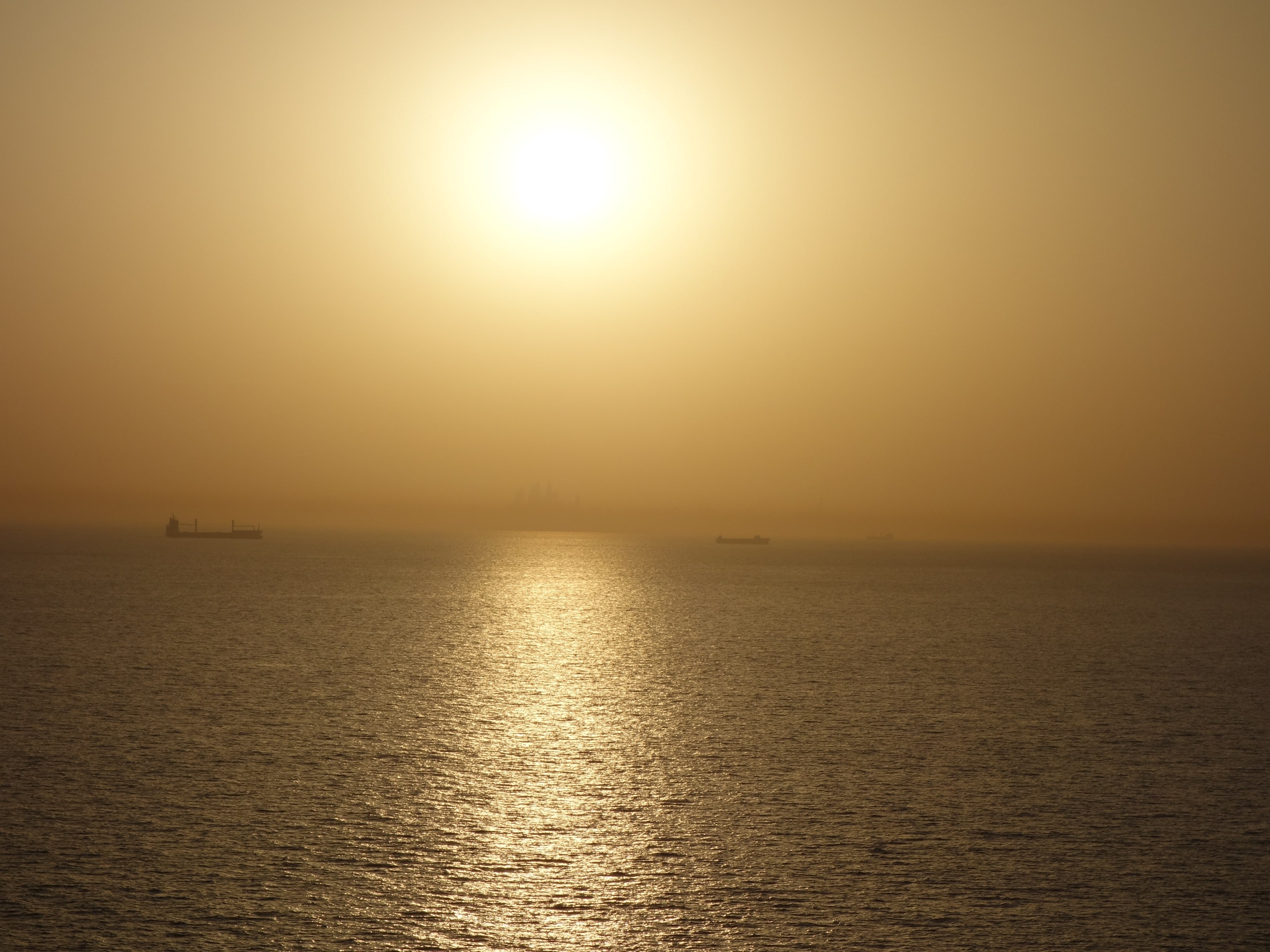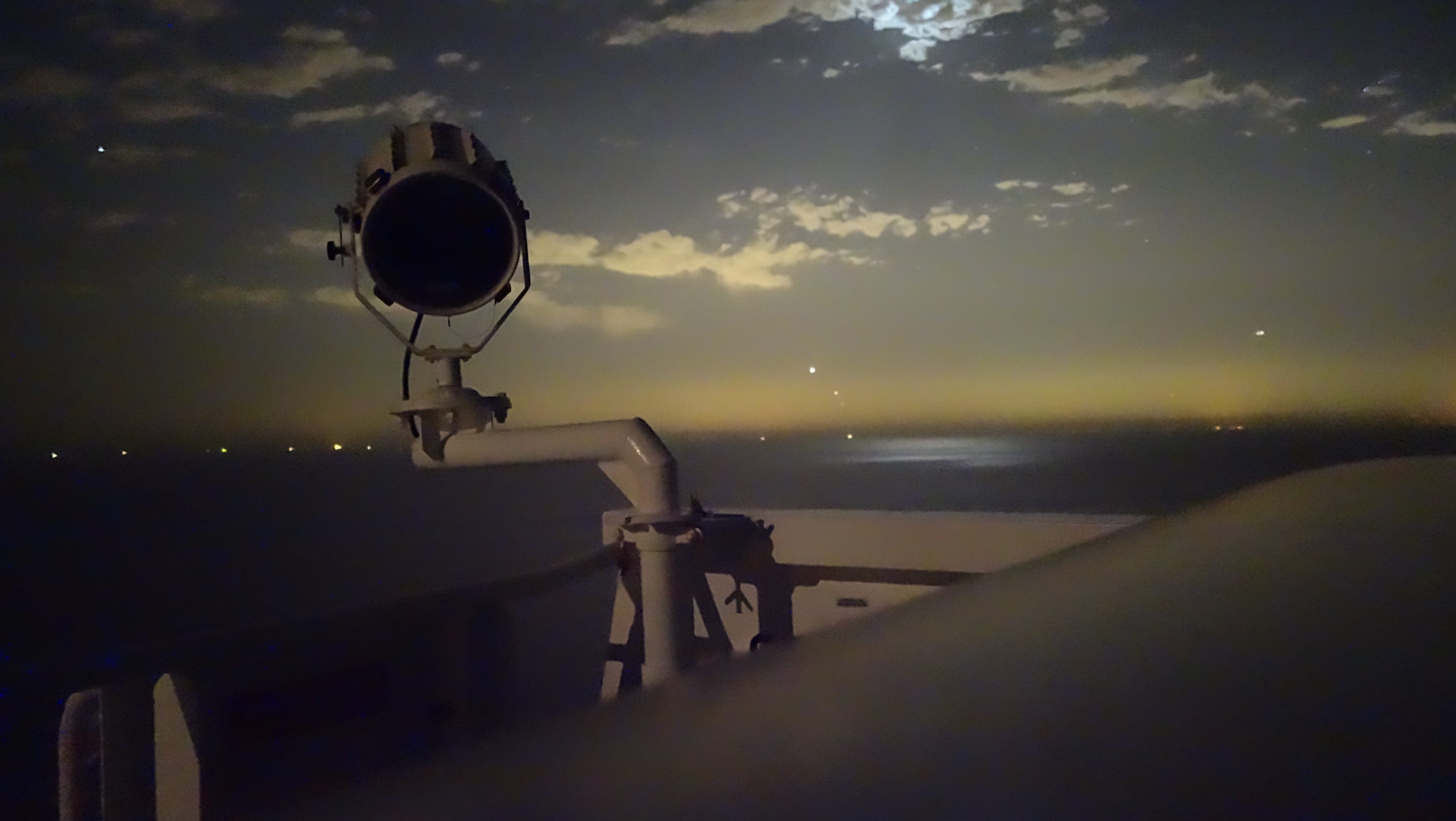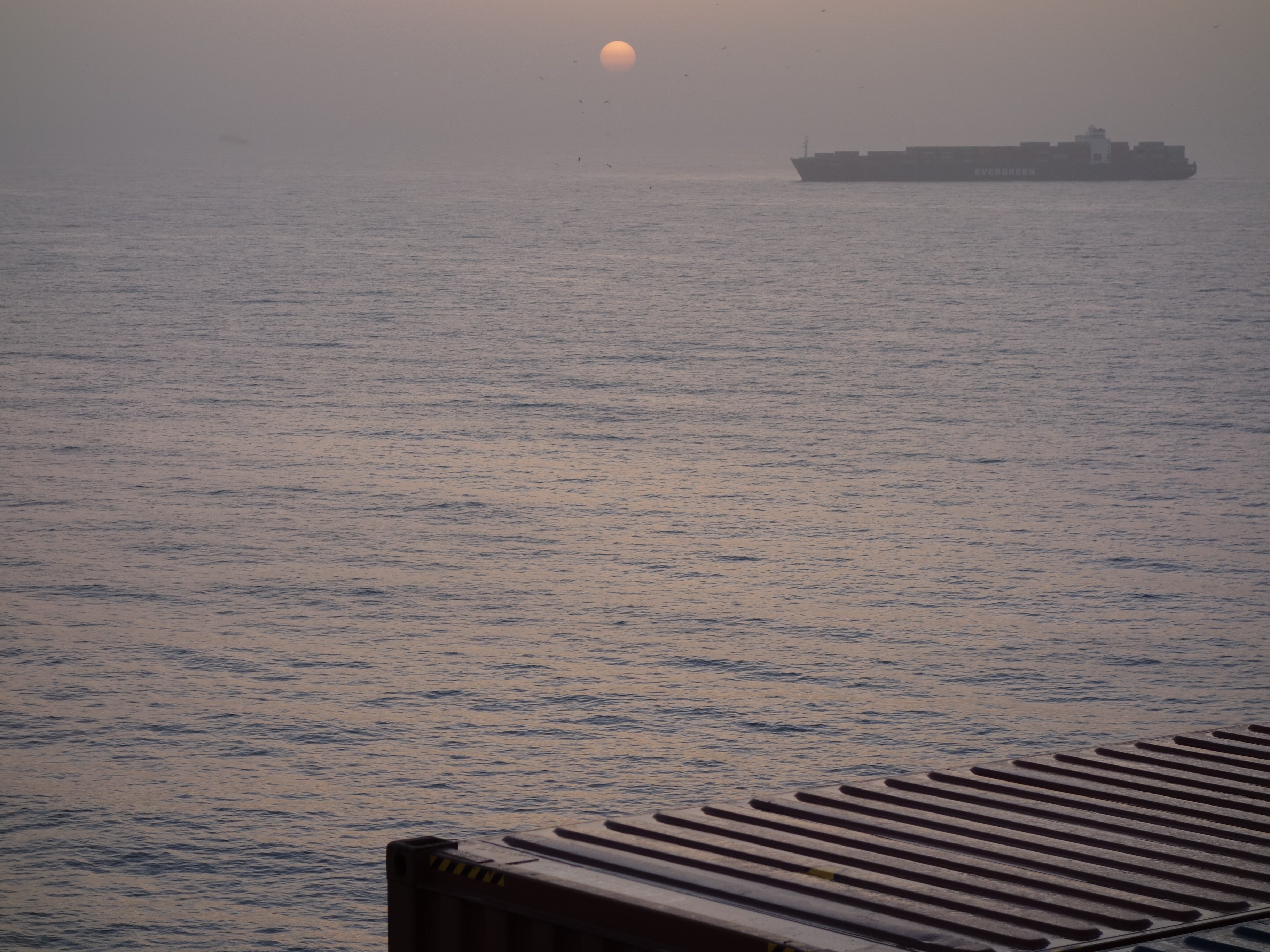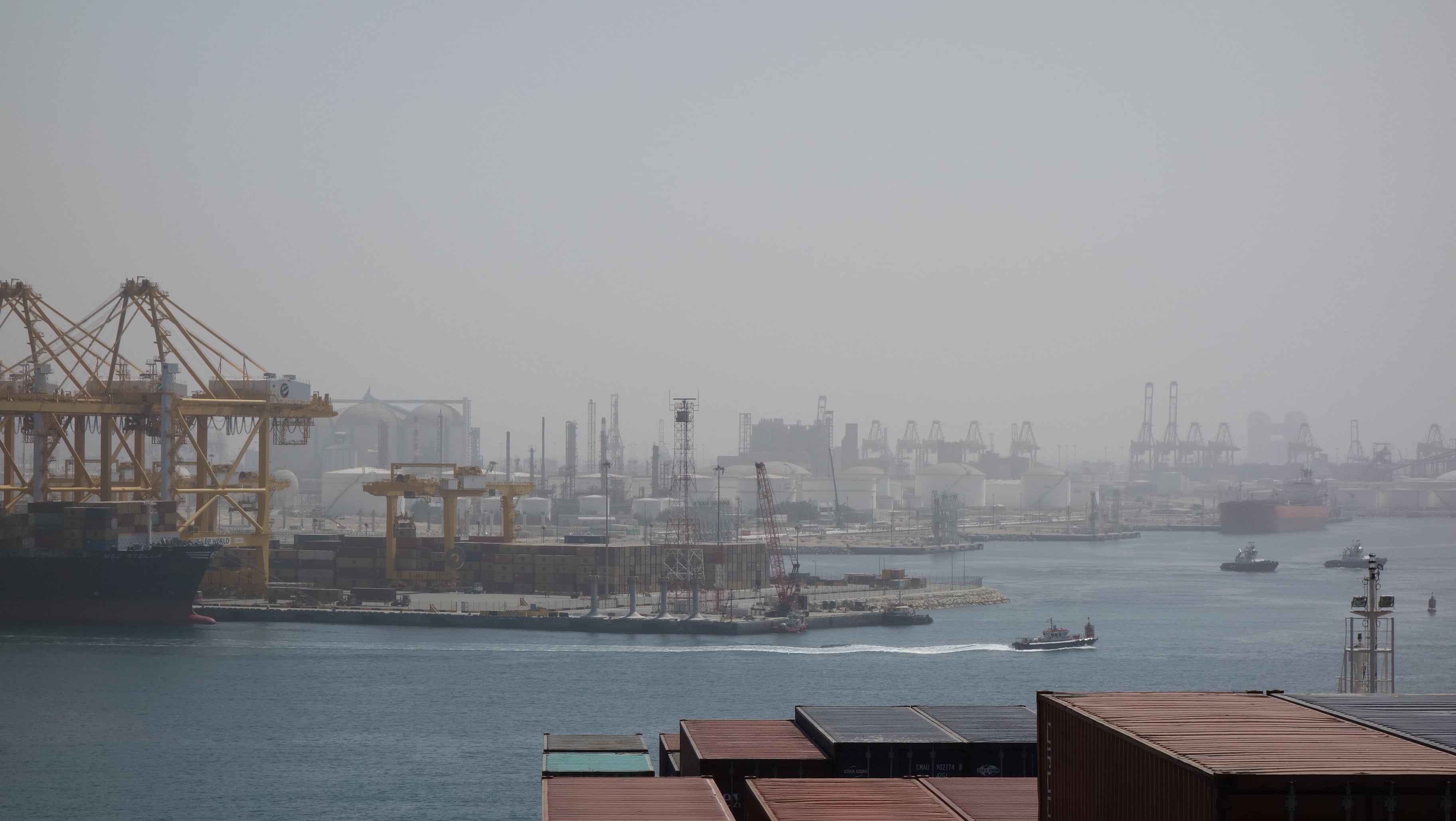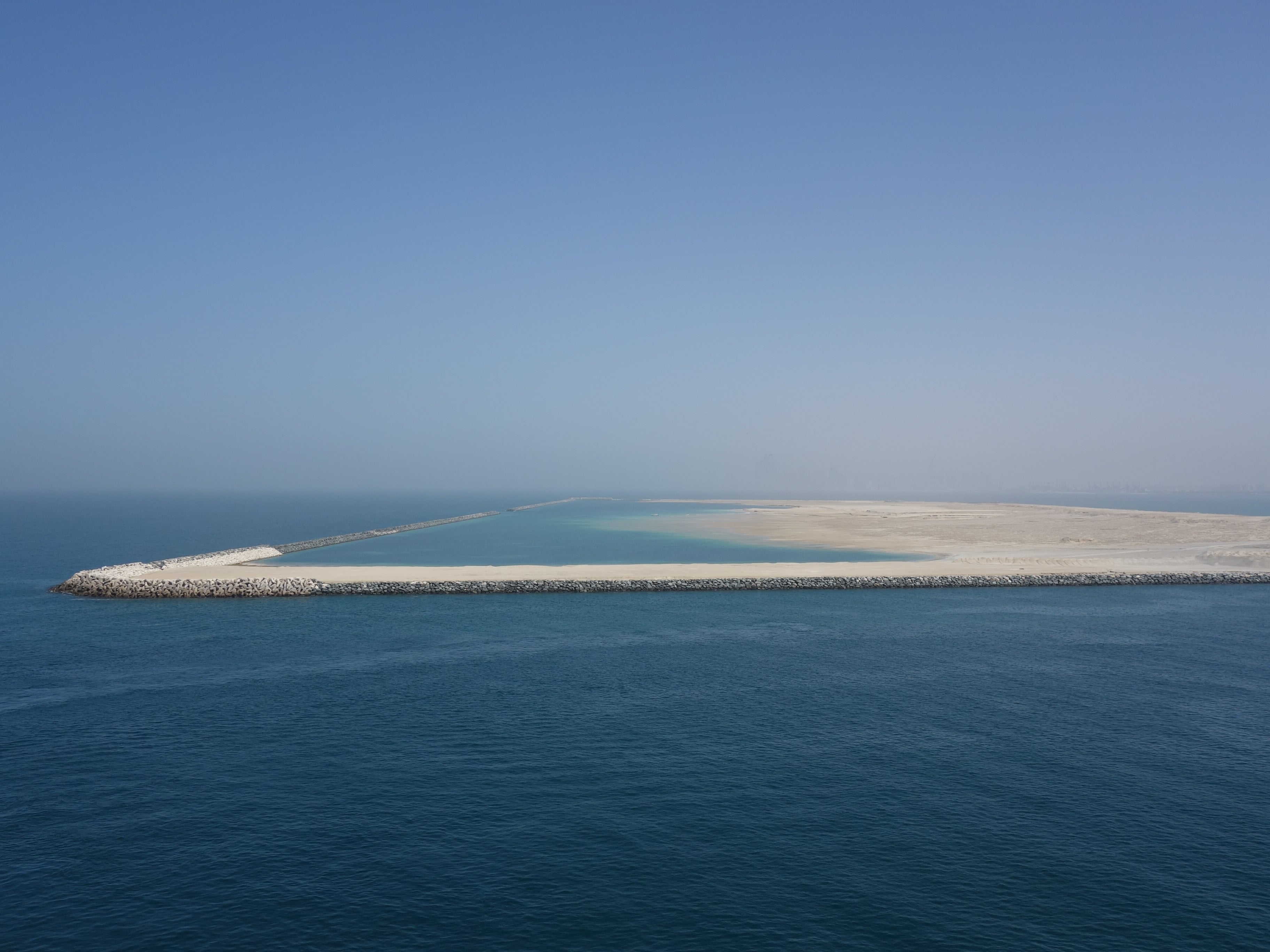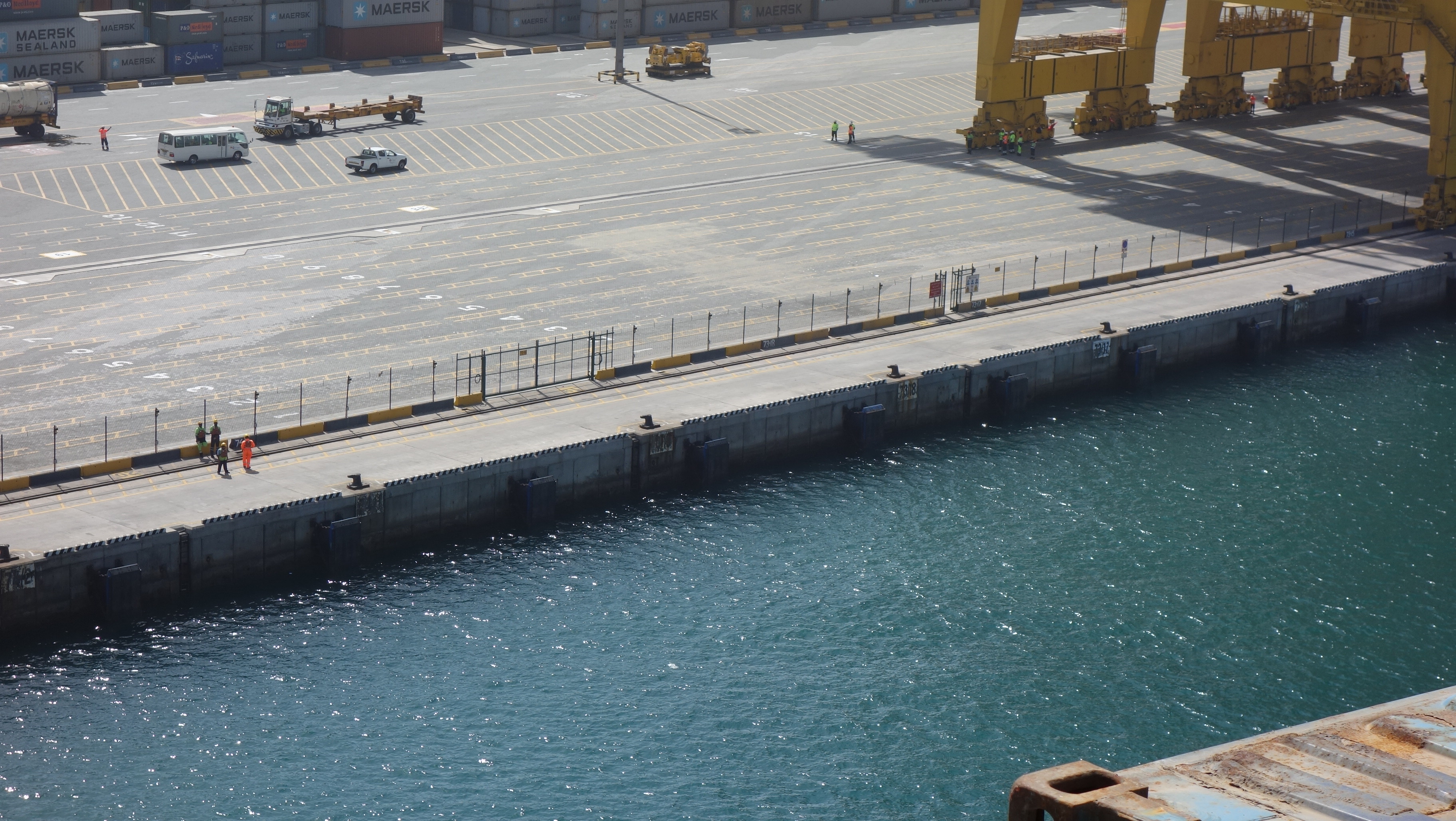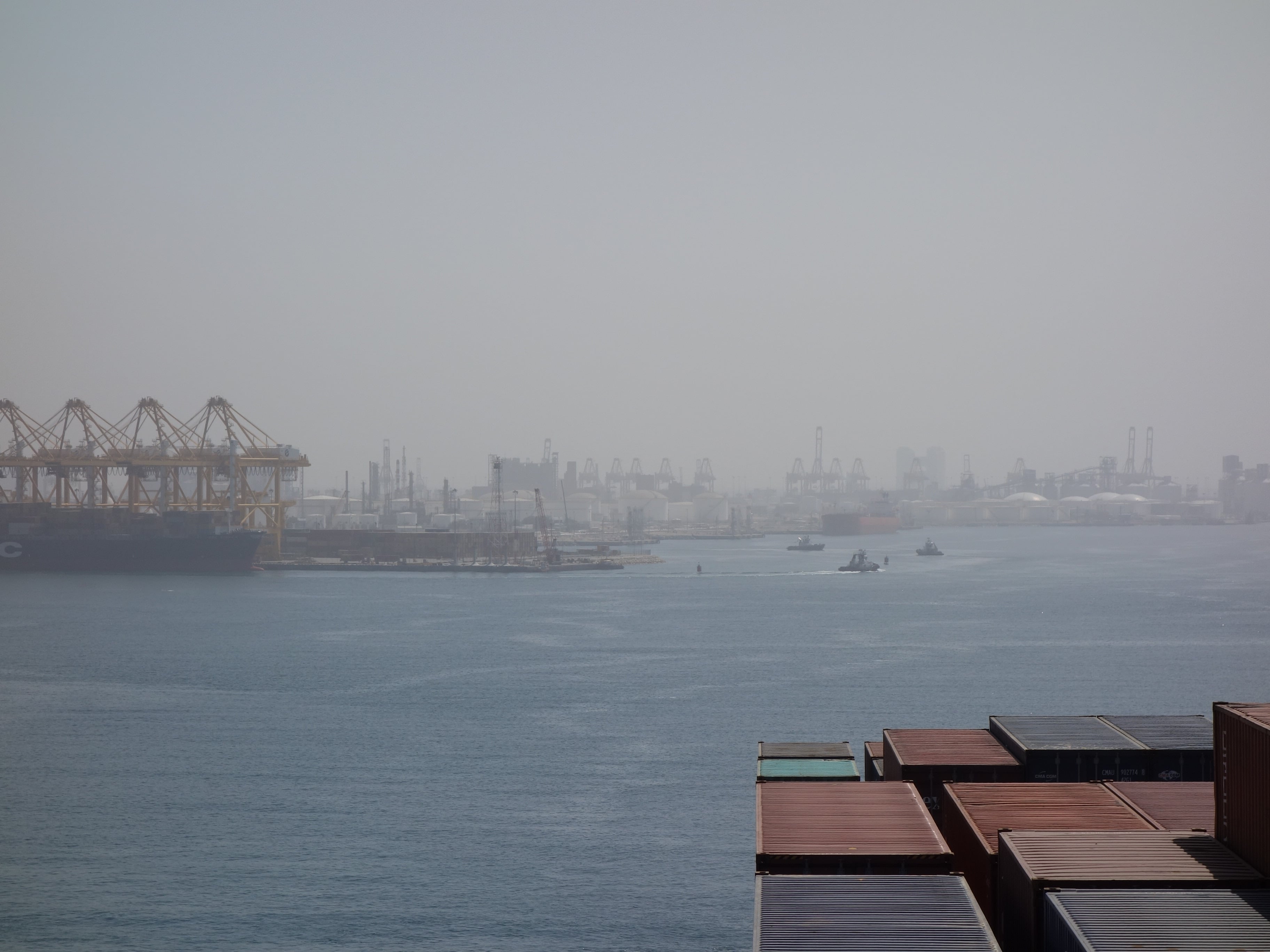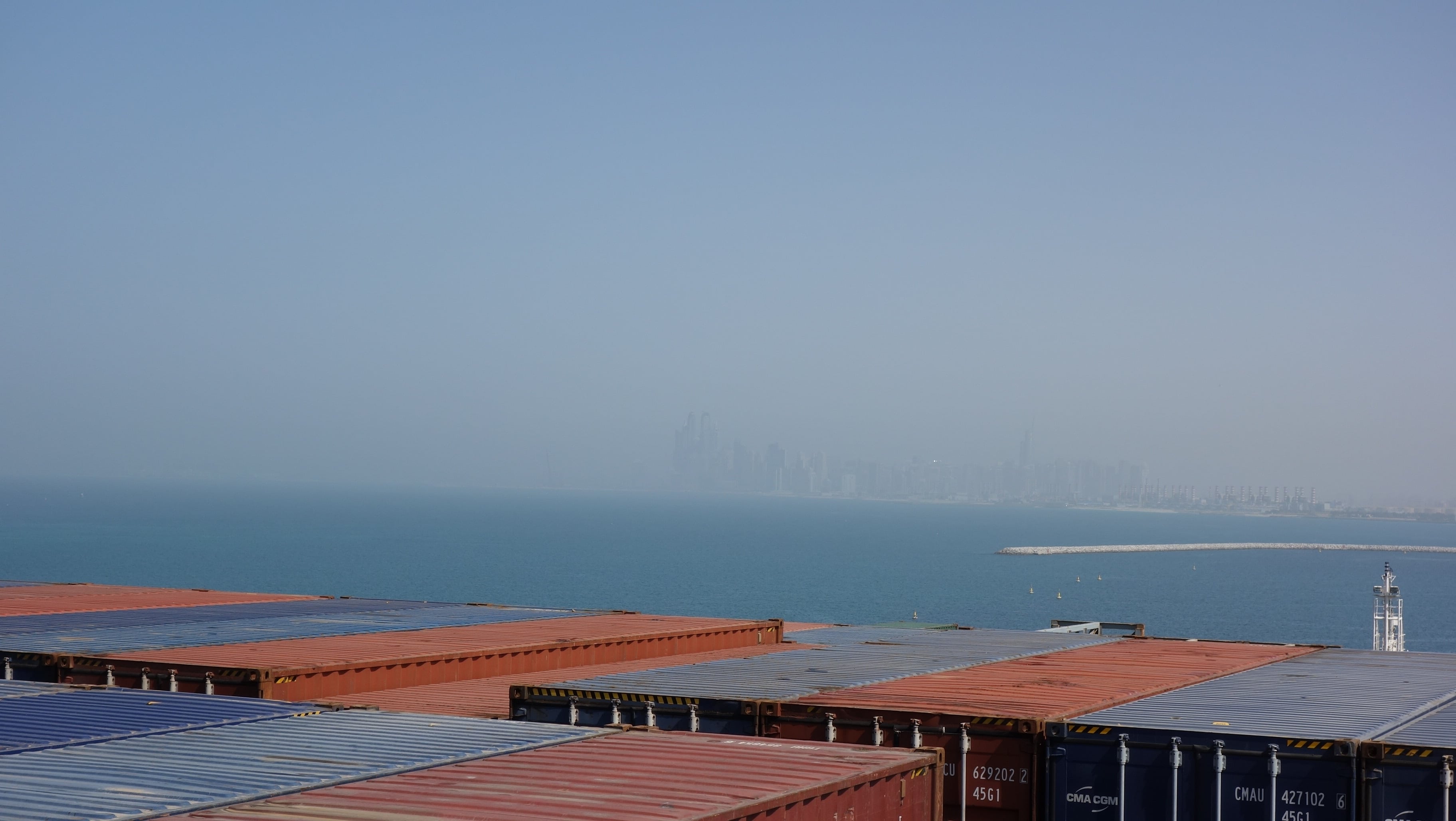Arrival
15 February 2015
16.00
We have arrived too soon, because of steaming at high speed through the Red Sea, the Gulf of Aden and the Arabian Sea, in order for the ship to make it to Ningbo for an earlier slot that has come free, but now the slot has been given up for Chinese New Year and the ship is no longer in a hurry. But I have nevertheless arrived a couple of days earlier than expected, to my regret. And yet, I may not be able to make landfall, as we are at anchor, have been at anchor since 07.17, some miles off the coast, awaiting a berth at Jabal Ali. We are tantalisingly close, so close that you could see Dubai at dawn, but too far to be able to send messages. When the sun rose and before the haze and humidity and pollution at the horizon became too impenetrable, we could actually see the towers of Dubai rising out of the mist. Now we sit at anchorage with a half dozen other containerships, some of them very large ones, and a few tankers and bulk carriers too.
What is astonishing about the Persian Gulf, and what I had not quite realised, and what is perhaps the response to my question about constraints is how unbelievably shallow it is. Our ship’s draft is between 15 and 16 metres. There are places not too far from where we are anchored where the depth of the sea is only 12 metres, and we would run aground if we happen upon them. In fact, the entrance to Jabal Ali seems to be a dredged channel of around 18 or 20 metres of depth, the surrounds of which are shallow waters. And the water seems treacherous in other ways too: there are shoals, sandbanks, that the Admiralty charts warn in their poetic admonishment, “could shift with the Shamals (northwestern winds).” All entrances to all ports on this side are narrow channels. And the place seems to be a battleground between ships and marine oil and gas fields and oil and gas terminals.
I woke up very early this morning –around 04.00- in anticipation of arrival. The wheelroom was still dark at 05.00 when I finally made it up there, but not silent. The radio was constantly cackling, and people were having strange conversations and making strange sounds under the cover of darkness. One man said to the other on the radio “But you are not my brother?” Another complained in Farsi, “Nakhoda, canal bedeh sohbat konim digeh.” The strangest one was this partly ghostly partly hilarious deep-voiced man who was mooing like a cow. As soon as the sun rose, though, the conversations became more business-like and the lonely madness of the dialogues in darkness subsided.
16 February 2015
In Jabal Ali port, Dubai
Having now arrived in Jabal Ali, I have to say I have now become jaded as I wished. Now, what I see is no longer the glory (although I still get a thrill from the sheer epic size of the cranes), but the work that goes on here. More below on this:
Again awake at 04.30 in anticipation of arrival in Jabal Ali, only to be told that there had been a delay; although the shipping agent mentioned that a berth had been secured for 09.00. At 08.00, once the third officer called Jabal Ali Port Control again, he was told that all cargo operation had seized in the port because of localised dense fog and no visibility. I went back to bed to take a short and restless nap, and when I came back up to the wheelroom at 9.30, they had received an all-clear, told that a pilot was on the way (who eventually arrived two hours later at 11.30) and had started the engine. The captain had previously mentioned that it takes a minute or minute and a half per each revolution of the engine; and so getting the engine to whatever rpm needed (to slow down or speed up) takes a lot longer than it would with other kinds of combustion engine.
It seemed to me, as we floated along with 13 other ships in the hazy polluted warm sea with the lovely warm southern breeze blowing, that for such an enormous port, the biggest in the Middle East, the operations at Jabal Ali were a bit shambolic: change of ETA time at berth several times over, sometimes far too late to be implementable; far too little information given; far too much congestion; one captain registering a complaint on the radio about his pilot; and the story of having to wait 4 or 5 hours for a pilot at another time; and Jabal Ali perhaps far too confident of its own importance to have to worry about all of this.
As I stood there in the dark at anchor with the officer, we listened to the radio, and again, it was the madness of radio exchanges under the concealment of darkness. One Iranian telling another one “Khorram, Khorram, bandari begzar.” And the conversations between another two Iranian ships surreal with their overabundance of ta’arof and polite niceties. Another man on watch in a lonely wheelroom howling into the radio. A third using the VHF channel to listen to terrible soft rock sentimental music. The officer said that sometimes these tankers remained at anchor for long periods and when they did, the people keeping watch at night went slightly mad with the tedium of waiting.
As we await the pilot to arrive, the anchors aweigh and then at home, the engine gently revving up and the ship drifting quietly, there is a companionable discussion between the Captain, the Chief, and the second mate about the price of property in Croatia, Montenegro and the Philippines.
At last when the pilot boat Murshid approaches at 11.35, a moustachioed south Asian pilot comes aboard and promptly informs the captain that his shift ends at 12.00 and he will soon be replaced. He leads us through into the channel, marked by buoys on both sides, and looking altogether too narrow. Even at not too far a distance from the port, it is far too hazy to see the land. The new pilot is a Yemeni captain, lean and wiry and gregarious, and his name is Mr Adly. We are led through the latter part of the channel and when the haze at last subsides, there is the industrial dystopia that is Jabal Ali, with its refinery and aluminium smelter and power plant and bulk goods terminal and ro-ro terminal and grain silos, and multiple container terminals. And the Megamax reclamation project on the outer edges of it, which the 2012 Admiralty chart speaks of being under construction and which is still in the same state of dishevelment today. And on the way, you can also see the reclaimed Palm Jabal Ali, again with no construction activity visible on it, and the entirety of the feeling of movement and bustle coming from the port and the free zone beyond it. And it is free: free of taxes, regulation, but perhaps most importantly of scrutiny. The security sea and its cloak of invisibility cover the ports as well.
This must be one of the most secure ports I have yet seen. Even the ship berths are separated from the port by security fences, and in this gridded, demarcated, hot, hazy, dusty space, moving from one grid square to another requires all sorts of security checks. Leaving the port to come back (for the crew or the passengers) is not really possible, as it takes an hour to drive to the customs and immigration point, and another hour to be processed there. But even more laboriously, the issuance of port passes is what takes a great deal of time and effort: you apparently need two photographs and to fill out a form and who knows what else.
This is the function of the port away from the city. Allan Sekula writes that “Harbors are now less havens (as they were for the Dutch) than accelerated turning-basins for supertankers and container ships.” But here, in these combined free-zone/ports which are now so de rigeur in every state and city-state that wants to become a Dubai or Singapore, they are more than that: they are factories. Literally. There is –aside from the aluminium smelter and the refinery- a Timberland factory here. And god knows what else. This port is also where the US Navy ships come to rest and resuscitate and also there are warehouses somewhere in this vast land of tankers, cranes and metal girders that store the US logistics goods being deployed or drawn down from Afghanistan. This vast area is part of the security sea, inaccessible, even invisible from the landside, lain out to see for everyone coming from the ships, but then the ships are part of this industrial landscape themselves.
Not too far away from here are the vast towers of the Dubai Marina, clustered together in the haze. I am sure that from those windows facing south people in those towers can see the port; but the port is far enough away that the humans are not seen; that the turning of the containerships and the movement of cranes becomes the beautiful ballet of growth and prosperity, and behind those windows people probably think more about the “wisdom and foresight” of the shuyukh that run these emirates and whose parastatal organisations found and manage and profit from and within these dystopias, and less about the constraints of capital, the abundance of labour, and the endless availability of seas to be reclaimed.
After arrival
It is a very odd thing taking the Metro going through the length of Dubai, and then arriving in Union Square where the middle class and clerical migrant workers pour out into the night in what is a festive beautiful twilight that can be happening anywhere in one of those “world cities” between the Tropics of Cancer and Capricorn (the latitude only mentioned because of the balminess of February) which consume fuel, goods, and labour from all over the world.
Getting out of the port itself was an experience. We arrived in the immigration and customs building where two locals in no hurry at all were processing endless queues of sailors represented by their shipping agents or not. Our shipping agent turned out to be a native of Mumbai who works for Rais Hassan Sa’adi in whose offices I had in September interviewed an old British colonial stalwart who had been a shipping agent in these parts for more than 50 years. And the other shipping agents all bore familiar names too: Kanoo for example or Khafji. But of course others too, having to do with Maersk and Han Jin and Evergreen. The Corte Real’s 4th engineer who needed to see a doctor and who had gotten off the ship an hour or so before me was still waiting in the queue. I was the only woman in there, and naturally was called up to be helped ahead of everyone else waiting. No one batted an eyelash, whether because of manly gallantry or me being a nuisance that needed getting rid of. No one also knew what to do with me, including the shipping agent. They had to struggle with the idea that I had a passport but not a seaman’s pass. Or that I wanted to leave the premises of the port and not come back in. In the end I got the stamp and left (after a bit of banter with the immigration guy who turned out to be of Iranian descent from several generations back). The exit from the port itself reminded me of Allan Sekula’s Forgotten Spaces, with the endless queues of trucks waiting to leave the port of Los Angeles or Long Beach (can’t remember which) and there being something about how no one really cared about the time these workers lost. Much the same here: endless numbers of seamen in the immigration room being served at snail speed (where the airport immigration –and especially for European passengers- is a model of efficiency). So, time is measured and priced differently according to the passport you carry and the social class you wear on your body.
